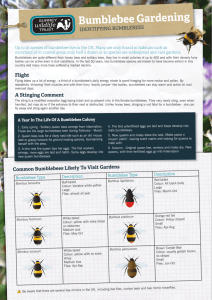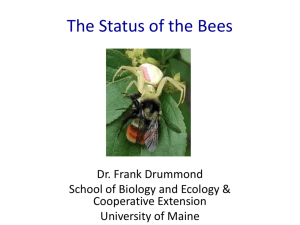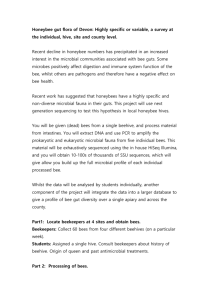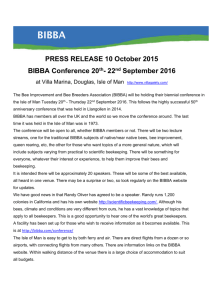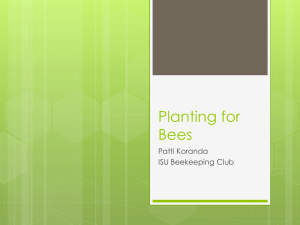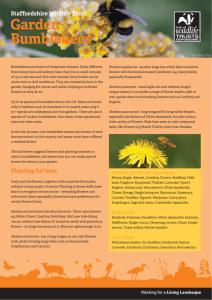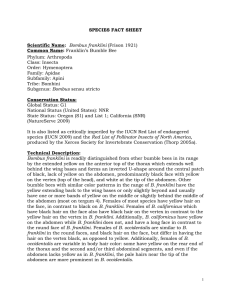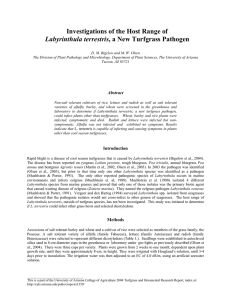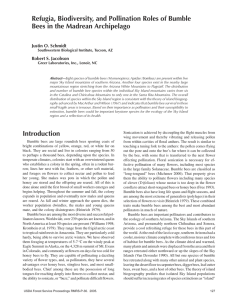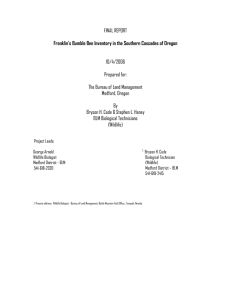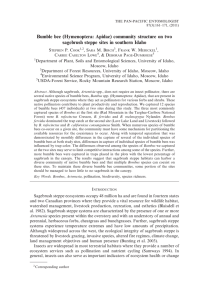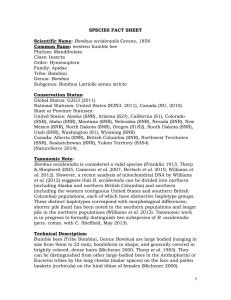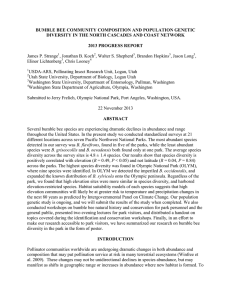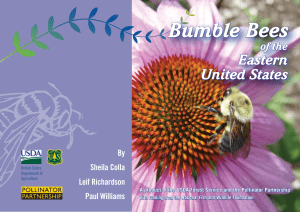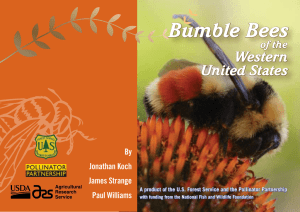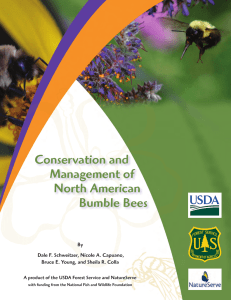The influence of introduced Bombus terrestris populations on plant
advertisement
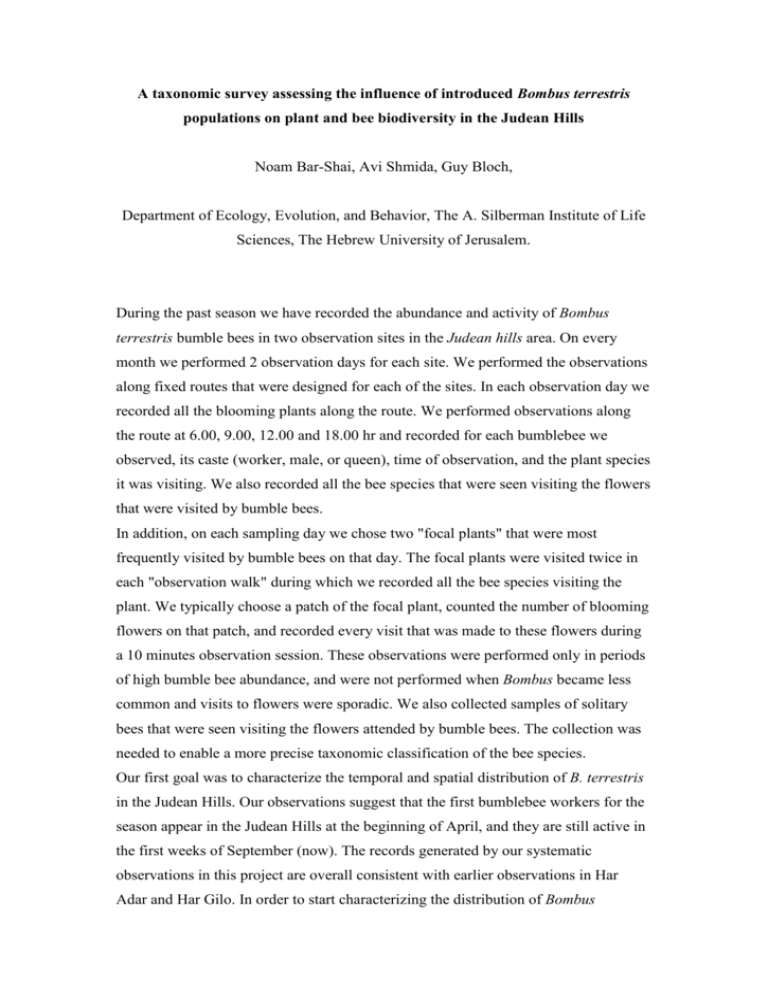
A taxonomic survey assessing the influence of introduced Bombus terrestris populations on plant and bee biodiversity in the Judean Hills Noam Bar-Shai, Avi Shmida, Guy Bloch, Department of Ecology, Evolution, and Behavior, The A. Silberman Institute of Life Sciences, The Hebrew University of Jerusalem. During the past season we have recorded the abundance and activity of Bombus terrestris bumble bees in two observation sites in the Judean hills area. On every month we performed 2 observation days for each site. We performed the observations along fixed routes that were designed for each of the sites. In each observation day we recorded all the blooming plants along the route. We performed observations along the route at 6.00, 9.00, 12.00 and 18.00 hr and recorded for each bumblebee we observed, its caste (worker, male, or queen), time of observation, and the plant species it was visiting. We also recorded all the bee species that were seen visiting the flowers that were visited by bumble bees. In addition, on each sampling day we chose two "focal plants" that were most frequently visited by bumble bees on that day. The focal plants were visited twice in each "observation walk" during which we recorded all the bee species visiting the plant. We typically choose a patch of the focal plant, counted the number of blooming flowers on that patch, and recorded every visit that was made to these flowers during a 10 minutes observation session. These observations were performed only in periods of high bumble bee abundance, and were not performed when Bombus became less common and visits to flowers were sporadic. We also collected samples of solitary bees that were seen visiting the flowers attended by bumble bees. The collection was needed to enable a more precise taxonomic classification of the bee species. Our first goal was to characterize the temporal and spatial distribution of B. terrestris in the Judean Hills. Our observations suggest that the first bumblebee workers for the season appear in the Judean Hills at the beginning of April, and they are still active in the first weeks of September (now). The records generated by our systematic observations in this project are overall consistent with earlier observations in Har Adar and Har Gilo. In order to start characterizing the distribution of Bombus terrestris in the Southern Judean Hills, we made two field trips to the Hebron Mountains. The Southernmost locations in which we had found Bombus were Kiryat Arba and Beit Hagay. Interestingly, Echinops plants in full blooming phase, which are important foraging plants for B. terrestris, were very abundant in the whole area. Thus, our observations are consistent with the hypothesis that the area of Beit Hagai is at the margin of the current distribution range of Bombus terrestris. In order to characterize the distribution of B. terrestris in other parts of Israel we had issued a call for people all over the country to send us observations and photos of bumble bees. This initiative has not been yet very productive. Given that we are still collecting field data, we have not yet accomplished our taxonomic analyses of the plant species that are visited by B. terrestris as well as of the bee species that forage on these plants. Nevertheless, it is clear that some plant species such as Cistus creticus, Teucerium creticum, and Verbascum sinuatum that have a long blooming period are frequently visited by B. terrestris as well as by wild bee species that may suffer from increasing competition with the bumble bee. We found potential competition between B. terrestris and wild bees in many other plant species of various families as well, and it seems that Bombus terrestris has an impact on many wild bee species because of its generalist visitation nature and extended season of activity. We specifically designed our observation protocol such that we start early in the morning, and finish late at the evening. This design enables us to notice that the bumble bees typically arrive to the rewarding flowers earlier than most other bee species and therefore has a competitive advantage enabling them to obtain most of the reward before the other pollinators arrive to the flowers.




